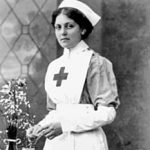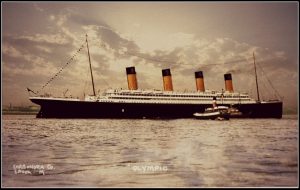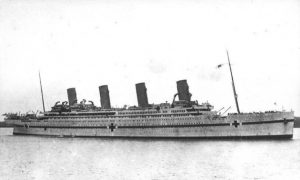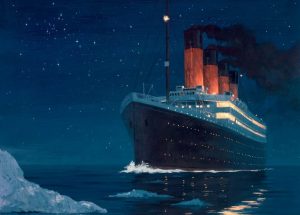
 Travel by ship was not always a safe mode of travel. Things like icebergs, wars, storms, and seashores were known to bring to an end a voyage, that was otherwise very enjoyable. Most people remember the Unsinkable Molly Brown, who was really Margaret Tobin, mostly because of all the publicity and even a musical. Surviving the sinking of the Titanic, while an amazing feat, was something that 705 other people did too. The stories and musical were a way of remembering the tragedy. As amazing as surviving a ship sinking in those days was, there is something that is far more amazing!!
Travel by ship was not always a safe mode of travel. Things like icebergs, wars, storms, and seashores were known to bring to an end a voyage, that was otherwise very enjoyable. Most people remember the Unsinkable Molly Brown, who was really Margaret Tobin, mostly because of all the publicity and even a musical. Surviving the sinking of the Titanic, while an amazing feat, was something that 705 other people did too. The stories and musical were a way of remembering the tragedy. As amazing as surviving a ship sinking in those days was, there is something that is far more amazing!!
Surviving, not one, but three ship accidents in those days. In 1910, Violet Jessop began working as an ocean liner stewardess and nurse for the White Star line. She was on board when RMS Olympic sailed on September 20, 1911. The Olympic was a luxury ship that was the largest civilian liner at that time. Olympic left from Southampton and collided with the British warship HMS Hawke. There were no fatalities when Olympic sand, and despite damage, the ship was able to make it back to port without sinking. She doesn’t really count this one, because it didn’t sink, but then it did collide with another ship. She didn’t think that one was such an amazing feat, but I’d say that counts. Jessop was then a stewardess on the RMS Titanic April 10, 1912, when she was 24 years old. Four days later, on April 14, it struck an iceberg in the North Atlantic, a story with we all know very well. Titanic sank a little more than two hours after the collision. Jessop described in her memoirs how she was ordered up on deck, because she was to function as an example of how to behave for the non-English speakers who could not follow the instructions given to them. She watched as the crew loaded the lifeboats. She was later ordered into lifeboat 16; and as the boat was being lowered, one of the Titanic’s officers gave her a baby to look after. The next morning, Jessop and the rest of the survivors were rescued by the RMS Carpathia. According to Jessop, while on board the Carpathia, a woman, presumably the baby’s mother, grabbed the baby she was holding and ran off with it without saying a word. Records indicate that the only baby on boat 16 was Assad Thomas, who was handed to Edwina Troutt, and later reunited with his mother on the Carpathia. Then, during the First World War, she served as a stewardess for the British Red Cross. On the morning of November 21, 1916, she was on board the HMHS Britannic, that had been converted into a hospital ship, when it sank in the Aegean Sea due to an unexplained explosion. The Britannic sank within 57 minutes, killing 30 people. British authorities decided that the ship was either struck by a torpedo or hit a mine planted by German forces.
After the war, Jessop continued to work for the White Star Line, before joining the Red Star Line and then the 
 Royal Mail Line again. During her tenure with Red Star, Jessop went on two around the world cruises on that company’s largest ship, the Belgenland. In her late thirties, Jessop had a brief marriage, and in 1950 she retired to Great Ashfield, Suffolk, where my dad had been stationed during World War II. Jessop, often winkingly called “Miss Unsinkable,” died of congestive heart failure in 1971 at the age of 83.
Royal Mail Line again. During her tenure with Red Star, Jessop went on two around the world cruises on that company’s largest ship, the Belgenland. In her late thirties, Jessop had a brief marriage, and in 1950 she retired to Great Ashfield, Suffolk, where my dad had been stationed during World War II. Jessop, often winkingly called “Miss Unsinkable,” died of congestive heart failure in 1971 at the age of 83.


3 Responses to Miss Unsinkable